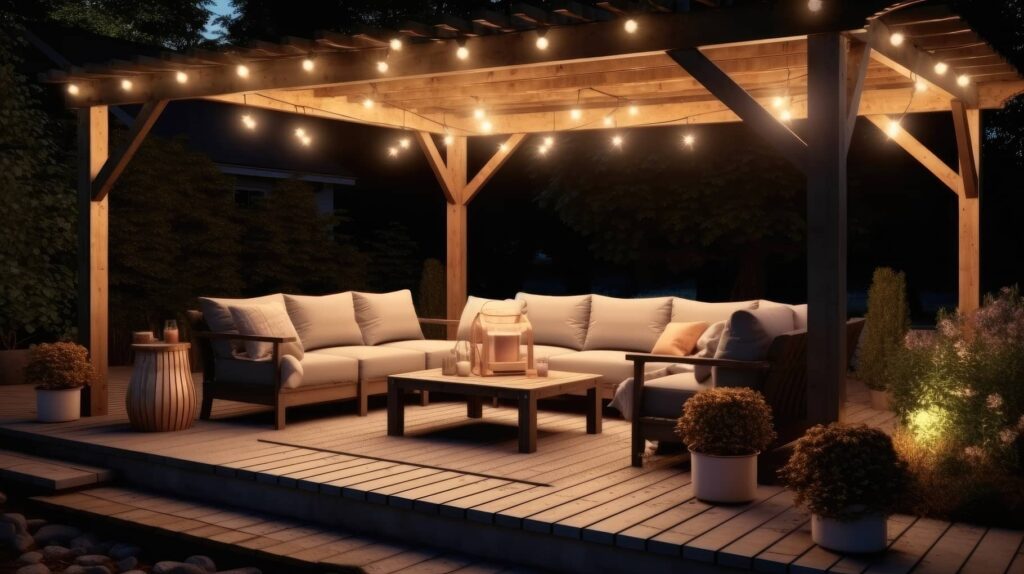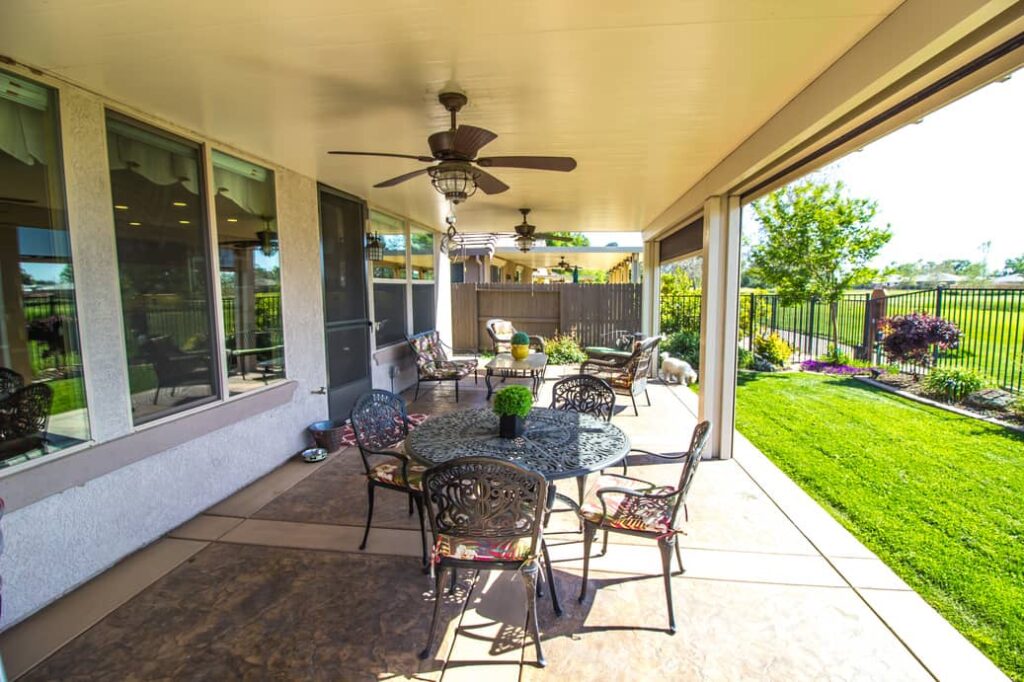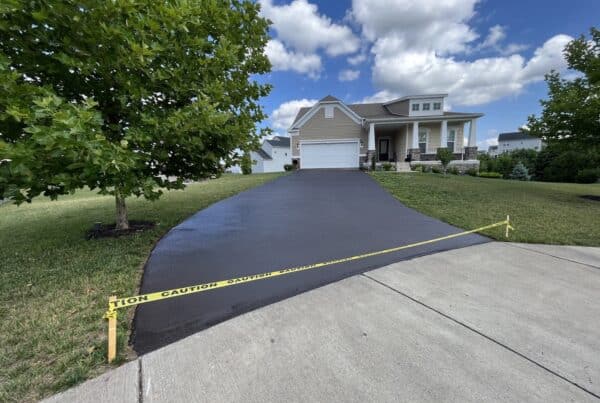
The sun can be brutal so having a patio cover helps entertain outdoors. Having a patio cover can greatly enhance your outdoor living space and protect from the elements. Whether you want to create a shaded area for relaxation or a sheltered space for entertaining, building a patio cover can be a worthwhile project. Wondering, how to build a patio cover? There are some tools that you will need and you will also want to follow instructions on how to build one. There are also alternatives if this is too big of a project.

Why You May Want a Patio Cover
There are several reasons why adding a patio cover to your outdoor space can be beneficial. A patio cover offers protection from sun exposure, providing shade and reducing the risk of sunburns. It also shields your furniture, plants, and other outdoor accessories from damage caused by rain, snow, or excessive sunlight. Additionally, a patio cover can extend the usable time of your outdoor space by providing shelter during inclement weather or cooler seasons.
Tools Needed to Build a Patio Cover
Before you begin building a patio cover, you will need a set of essential tools. These tools typically include:
- a measuring tape
- drill
- circular saw
- level
- hammer
- nails and screws
- screwdriver
- ladder
- safety goggles
Depending on the complexity of your design, you may also require additional tools such as a miter saw, chisel, or jigsaw.
How to Build a Patio Cover
Building a patio cover involves several steps. Firstly, you need to determine the size and shape of your desired cover. Next, prepare the necessary materials, including lumber, roofing materials, and any additional features like lighting or ceiling fans. Then, follow a detailed plan or set of instructions to construct the framework, attach the roof panels, and complete the finishing touches. Remember to prioritize safety throughout the entire process and double-check your measurements and construction for accuracy.

What to Consider in the Design
When designing your patio cover, consider factors such as the architectural style of your home, the overall aesthetic you want to achieve, and the functionality of the space. Think about whether you prefer a solid or open design, how much light and ventilation you desire, and any specific features you want to incorporate, such as skylights or retractable awnings. Ensure that your design fits harmoniously with your existing outdoor landscape and complements the overall look of your property.
Structural Factors
While designing your patio cover, it is crucial to pay attention to structural factors to ensure its stability and longevity. Consider the load-bearing capacity of your patio, the local building codes and regulations, and the durability of the materials used. Adequate support beams, proper anchoring techniques, and weather-resistant materials are essential elements to ensure the structural integrity of your patio cover.
Other Ways to Cover a Patio
If building a patio cover from scratch seems daunting, there are alternative ways to cover your patio. You can opt for pre-made canopy systems, pergolas, umbrellas, or shade sails, which offer a quicker and simpler installation process. These options provide varying degrees of shade and protection while requiring less construction work. However, it is important to carefully evaluate their durability, maintenance requirements, and suitability for your specific needs.
Other Recommended Maintenance
Now that you know about building a patio cover, let’s take a look at a few other areas of recommended maintenance. One of those is cleaning the brick patio. No matter if you have a cover or not, the patio will get dirty. To clean it, sweep the debris, prepare the cleaning solution, apply the solution, scrub, and rinse.
Another is fixing a squeaky outdoor faucet. To do this, purchase a new rubber washer and a new outdoor faucet (spigot) and replace the old ones.
Lastly, another way people like to entertain is with a gas fire pit. Gas fire pits are safe on a deck as long as the gas fire pit is not making contact with the wood or composite decking and have clearance.
When to Call a Professional
Building a patio cover may not be suitable for everyone, especially those lacking experience or the necessary tools. If you are uncertain about your abilities, encounter complex structural issues, or desire a more intricate design, it is advisable to consult a professional contractor or designer. They can help in assessing your needs, creating custom plans, obtaining permits, adhering to building codes, and ensuring a safe and successful patio cover installation.
Conclusion
Adding a patio cover to your outdoor space can greatly enhance its functionality, aesthetics, and overall enjoyment. By carefully considering the design and structural factors, using the appropriate tools, and following proper construction techniques, you can successfully build a patio cover that meets your needs.
Whether you choose to DIY or hire a professional, investing in a patio cover can create a more comfortable and inviting outdoor living area for you and your loved ones to enjoy throughout the year. While you are working on your outside space, this is a good time for a home inspection. Call on Avalon Home Inspectors to inspect your home in Atlanta, GA, and surrounding areas.






